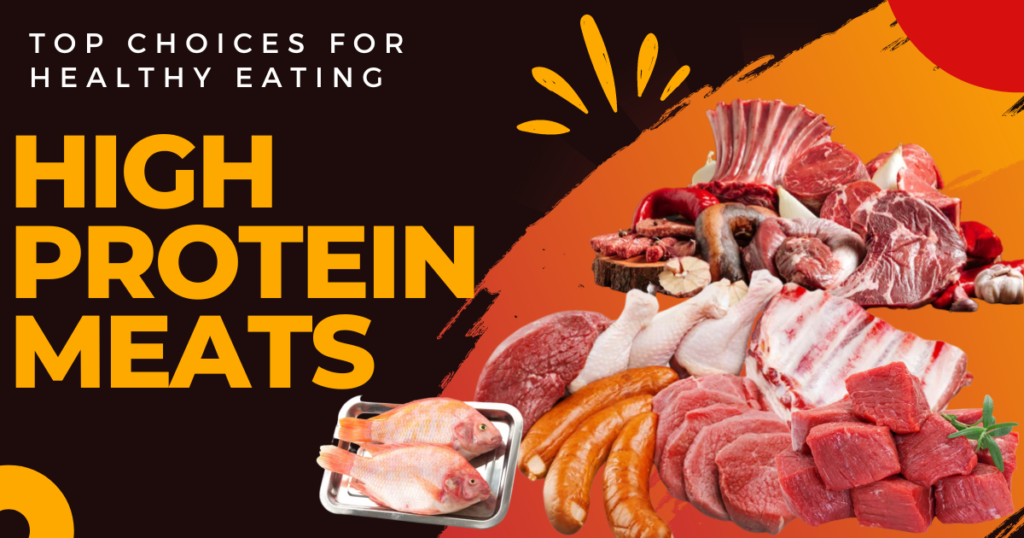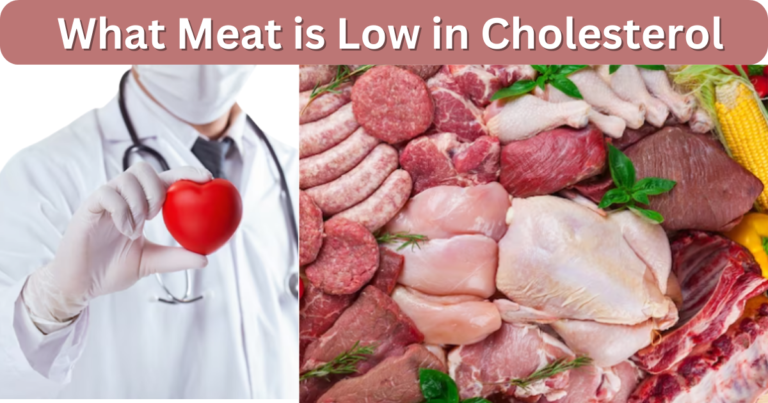What Meats are High in Protein: The Top Choices for Healthy Eating
In a society where well-being and fitness have claimed the spotlight, understanding your origins of protein becomes imperative. Protein, the building block of our bodies, is found abundantly in meat. But, not all meats are created equal. Let’s embark on a journey to uncover the meats packed with the most protein, aiding in your quest for a healthier lifestyle. Get ready to delve into the delicious and nutritious realm of high-protein meats.

Why Meat is Essential for the Human Body
The role of meat in our diet is significant, serving as a vital repository of essential nutrients. The proteins in meat aid in body repair and growth. Its B vitamins boost energy production and brain function. Iron in meat enhances blood health and immunity. Plus, meat offers key minerals like zinc and selenium. A moderate intake of meat, therefore, contributes significantly to a healthy lifestyle.
Why Choose High-Protein Meats?
High-protein meats have a host of benefits for our health. They play a pivotal role in muscle growth and repair, thanks to protein’s inherent properties. Protein is vital for our bodies because it supports muscle health. It helps build new muscle tissue and repair old or damaged cells. This is especially crucial after a strenuous workout session when muscles undergo wear and tear. Consuming high-protein meats aids the body’s recovery process, promoting muscle growth and strength [1].
Incorporating high-protein meats into your meals can also promote prolonged satiety. This can help manage weight by reducing overeating and unnecessary snacking. So, if you’re looking for a way to support your muscle health, control weight, and stay satiated, high-protein meats could be a great addition to your diet!
Top High-Protein Meats
- Chicken breast tops the list of high-protein meats. One serving of cooked chicken breast (approximately 100 grams) offers around 31 grams of protein [2]. It’s recognized for its leanness, minimal fat content, and abundance of vital nutrients such as vitamin B6 and niacin.
- Turkey stands as another exceptional protein source. A 100-gram serving of cooked turkey yields approximately 29 grams of protein [3]. Moreover, it’s brimming with vitamins like B6 and B12, contributing to energy generation.
- Beef is renowned for its elevated protein concentration. Approximately 27.8 grams of protein can be found in a 100-gram portion of cooked lean beef [4]. Furthermore, it’s a commendable reservoir of iron and vitamin B12.
- Tuna a high-protein fish, boasts roughly 25 grams of protein in a 100-gram serving [5]. Its nutritional profile also encompasses omega-3 fatty acids, renowned for their heart-boosting attributes.
- Lamb is another great source of protein. 100 grams of cooked lamb contains roughly 25 grams of protein [6]. It’s packed with zinc, which helps support immunity, and vitamins B12 and B6, promoting energy production.
- Bison is a lean red meat packed with protein. 100 grams of cooked bison offers approximately 25 grams of protein and plenty of minerals, including phosphorous and selenium [7].
- Veal is a light-colored meat with around 24.4 grams of protein per 100-gram serving [8]. It emerges as an impressive source of vitamins B12 and B6, essential for energy synthesis.
- Venison, sourced from lean deer meat, presents roughly 23 grams of protein per 100-gram portion. It further offers a rich supply of iron, along with vitamins B12 and B3 [9].
- Rabbit meat is a lean white meat that’s packed with protein. A 100-gram serving of cooked rabbit provides about 20 grams of protein and plenty of essential minerals like zinc and iron [10].
- Duck breast, recognized for its lean composition, contributes about 19 grams of protein per 100-gram serving [11]. Additionally, it boasts a noteworthy content of heart-boosting omega-3 fatty acids.
Are All High-Protein Meats Created Equal?
Not all high-protein meats are created equal. Variations in protein, fat, and essential nutrients characterize different meat types. For example, chicken breast is both protein-rich and low in fat. On the other hand, beef offers a good amount of protein and is rich in iron and vitamin B12 but also comes with a higher fat content.
Moreover, the manner of meat preparation and the cut itself can wield influence over its nutritional composition. Lean cuts are usually lower in fat but still provide high protein. Cooking methods also matter. For example, grilling or baking meat can retain more nutrients than frying.
Tips to Get the Most Out of High-Protein Meats
- Cook it Right: Different meats require different cooking methods. Cook your meat properly to maintain its nutritional value.
- Pair with Veggies: Infuse vibrancy into your plate by combining high-protein meats with an array of vegetables for a well-rounded diet.
- Watch the Portion Sizes: It’s essential to keep an eye on your portion sizes. While these meats offer abundant protein, excessive consumption can lead to weight gain.
- Choosing Lean Cuts: Whenever feasible, opt for lean cuts of meat, which maintain protein levels while reducing fat content.
- Avoid Processed Meats: Processed meats tend to be laden with sodium and preservatives, making it advisable to limit their consumption. Stick to fresh, whole meats for the best health benefits.
- Moderation is Key: Remember, even with high-protein foods, moderation is crucial. Balance your diet with other nutritional elements for overall health.
- Staying Hydrated: Adequate hydration is pivotal when adopting a high-protein diet, facilitating efficient protein metabolism.
- Marinate for Flavor: Use healthy marinades to add flavor to your meat without adding unnecessary fats or sugars.
- Don’t Overcook: Overcooking can lead to a loss of nutrients. Cook your meat just until it’s done to maintain its nutritional integrity.
- Mix it Up: Embrace variety by incorporating an assortment of meats into your diet, ensuring a spectrum of nutrients from diverse sources.
FAQ’S
Chicken breast is regarded as a prime example of a high-protein meat with commendable nutritional attributes due to its ample protein and minimal fat content.
Yes, high-protein meats can support weight loss by promoting prolonged satiety, thereby reducing the propensity for overindulgence.
This depends on your body weight, activity level, and health goals. It’s best to consult a nutritionist for personalized advice.
Prudence suggests avoiding processed meats due to their potential for heightened sodium and preservative content. Opt for fresh, whole meats instead.
While meats are a great source of protein, it’s important to balance your diet with other protein sources like dairy, beans, and nuts for variety and complete nutrition.
Conclusion
Incorporating high-protein meats into your diet can offer a host of health benefits, ranging from increased satiety to supporting muscle growth. However, it’s imperative to recognize that not all meats share identical nutritional profiles. Opt for lean cuts where possible, avoid processed meats, and vary your sources of protein to ensure a balanced and nutritious diet. Furthermore, while meat is a great protein source, it should be part of a varied diet that includes other protein sources like dairy, beans, and nuts. Seeking tailored dietary counsel is always recommended and best acquired from qualified nutritionists or healthcare professionals. Bottom line – a well-balanced, varied diet is the key to optimal health.






